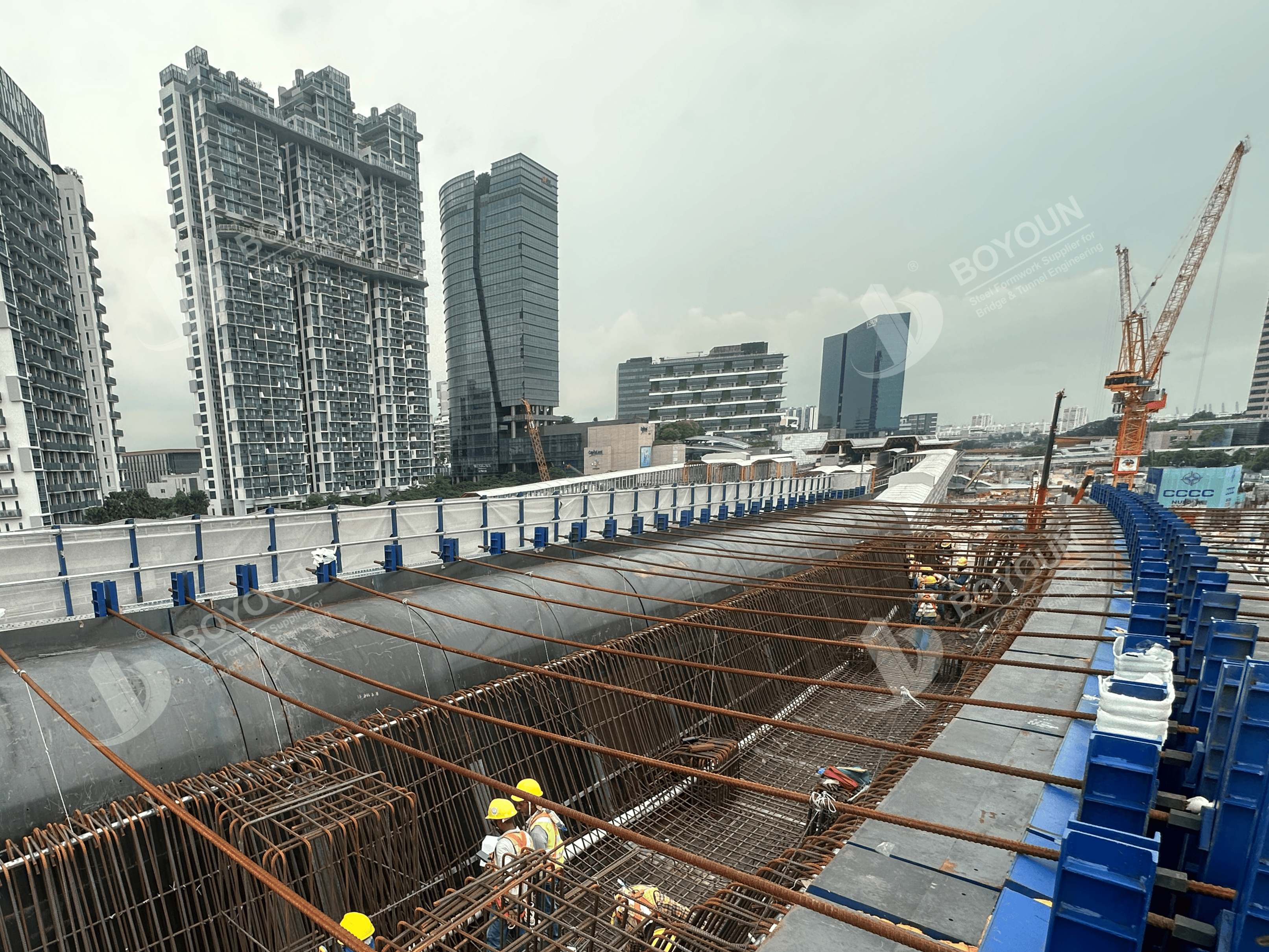In bridge and road engineering, both cast-in-place box girder and precast box girder construction technologies are widely used. The prestressed concrete continuous box girder is widely applied due to its high integrity, high stiffness, and convenient shape. The precast box girder is widely used due to its standardized production, which saves construction time, reduces project costs, and minimizes the impact of concrete shrinkage and creep on bridge quality. Therefore, we have provided a comprehensive overview of the construction technologies for cast- in-place box girders and precast box girders. This article focuses on the construction technology of cast-in-place box girders. let's dive in!

Firstly, initially level the site and establish fixed support. If the ground can support the load directly, the ground treatment process can be omitted. Simply clean the surface, compact it, and lay a plain concrete base to prevent foundation settlement. Secondly, remove the silt and soft soil in the foundation. Thirdly, prevent the subgrade from softening and settling due to long - term immersion, which could cause uneven stress on the foundation.
Before erecting the support, relevant data should be calculated and measured in advance, and the support should be arranged symmetrically according to the centerline. A base plate is placed at the bottom of each upright pole to ensure that the pole is at the center of the base plate. The base plate is used to prevent unnecessary settlement and displacement, ensuring uniform overall stress. In addition, according to the design, install the cross bars and tie rods from the bottom to the top. After installing the remaining parts, proceed layer by layer upwards. To ensure the overall reliability of the support, diagonal braces are usually connected to the support by fasteners when installing them. Place fasteners at the frame joints as much as possible to ensure the verticality of the entire upright pole and the quantity index of the ground-sweeping rods. The bowl - type support is integrated into one through the combined action of steel pipes and military pier supports, which significantly improves the overall reliability and stiffness of hybrid support.
The formwork installation should be combined with the embedding of steel bars and prestressed ducts. On the one hand, workers need to clean and maintain the formwork in a timely manner to ensure it is clean, tidy, free of debris, and not prone to deformation. Regularly inspect all formworks and repair and arrange the weld positions of the support. When installing the bottom formwork, the support chamber's reserved space should be processed and adjusted, and a comprehensive analysis of the loading pre-pressure test should be conducted. On the other hand, when installing the side formwork, it should be consistent with the bottom formwork. The verticality of the side formwork should be adjusted to ensure a strong connection with the end formwork. After all side formworks are installed, check the bolt-connected positions to ensure firm installation. When installing the inner formwork, the construction should be carried out in combination with the formwork connection method, and the splicing structure can be installed by hoisting.
Before prestressing construction, ensure that the outer layer of the steel strand is smooth and clean, carefully check for any damage, and repair it in a timely manner. During the cutting process, use an appropriate type of iron wire to bind and control the spacing. For prestressing hole-forming operations, use internally-inserted plastic pipes, pre-embedded corrugated pipes, etc. Before starting to tension the box girder, clean the debris on the surface. Once the overall strength of the concrete reaches 50% of the construction requirements, the box girder can be tensioned with the formwork. When the concrete strength reaches 80%, the initial tensioning is carried out. During the tensioning construction, a dedicated person should monitor the pipe friction value and the bell-mouth friction value in real-time and make necessary adjustments based on numerical changes.
Before installing the box girder, repeatedly confirm the parameters such as the size and specification of the steel bars and strictly control the quantity, position, and spacing of the steel bars. Generally, the steel bars of the box girder are bound. To ensure strength and reliability, the steel bars can be welded in advance. Ensure that the storage environment of the steel bars is dry. When the designed installation positions of the steel bars are not reasonable compared with those of the prestressed pipes and anchors, the installation positions should be adjusted as necessary to make the installation construction consistent with the design plan and prevent incorrect installation.
In conclusion, the construction technology of cast-in-place box girders is of great significance in bridge and road engineering. From the careful treatment of the support foundation to the orderly construction of the support tower, formwork, prestressing, and steel bars, each link is closely connected and plays a crucial role in project quality. Only by strictly following these construction points can the cast-in-place box girder give full play to its advantages of good integrity and stiffness in the project, laying a solid foundation for the safety and stability of bridges and roads. In the next article, we will discuss the key construction technologies of precast box girders. Welcome to reach out to us to share your different opinions and follow our content.

International Department: Room 2211-2212, Tower C of Wanda Plaza, Tongzhou District, Beijing 101118, China.
+86-13021287080
info@boyoun.cn